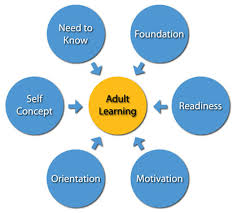Blended learning has been a hot topic in corporate training where terms like “learning management systems,” “blended learning,” and “content management systems” have been kicking around for some time now. The lingo hasn’t quite caught on in the k-12. The reason? Without access to computers, it seems silly to talk about blended learning. But with programs like Bring Your Own Device, which our district launched last year, that paradigm is changing and it’s changing quickly. So for me, the question is not will blending learning come to k-12 education, but rather when.
Computers can do some really amazing things, and I know teachers who fear classrooms will one day be filled with students being taught by computers. But we’re a long way off from that and we’ll get into the reasons why in a minute. For now, let’s put that debate about computer-based learning aside and focus on what the computer and teacher do well that makes their partnership such a great guide for learners.
Here’s how computers come in handy for learning:
- Accessibility to a mass amount of content in many different forms: music, video, photo, text, interactive simulations, graphics, publishing etc.
- Organization by creating structure for tracking assignments, grades, feedback, etc.
- Searchability through data bases by categorizing/tagging/grouping/sorting
- Aggregating massive amounts of data
So with just a computer we can access content, organize it, add to it, and gather data that may give us some insights to better instruction. But the computer is only the half of it. Here’s where teachers come in.
- Building relationships: It’s the cornerstone of being human, something most of us don’t do well without.
- Identifying nuances and misconceptions: Right now a computer can tell you if your answer to a division problem is right or wrong. But a teacher can pin-point exactly where the mistake is being made for example is it a multiplication error, understanding of place value, or misunderstanding of order of operations.
- Tweaking: Computers use algorithms to “learn,” but it’s teachers who tweak and experiment to find new effective ways to motivate and break through barriers.
- Scaffolding and leading learning: Again this gets back to recognizing nuances and making inferences. A teacher can fill in gaps students may have from lack of personal experience.
The disadvantages of blending learning tend to be in rooted in design, class management, and social issues. Blended learning is not simply pre-recording lectures and power points and putting them online for students to access. Teachers need consider what is the best method to teach the concept and then use this information to design the course. Some teachers have reported that planning for both live classes and online environments is taxing. Others say having an LMS makes their class management much easier. Depending on the structure of the class, some students have reported feeling isolated. These issues however, can for the most part be address through training and design. The key thing for us to remember is that there is no foolproof design, but there are tools at our disposable and we do the best service to learners when we think about how we can use those tools to their highest and best utility.

